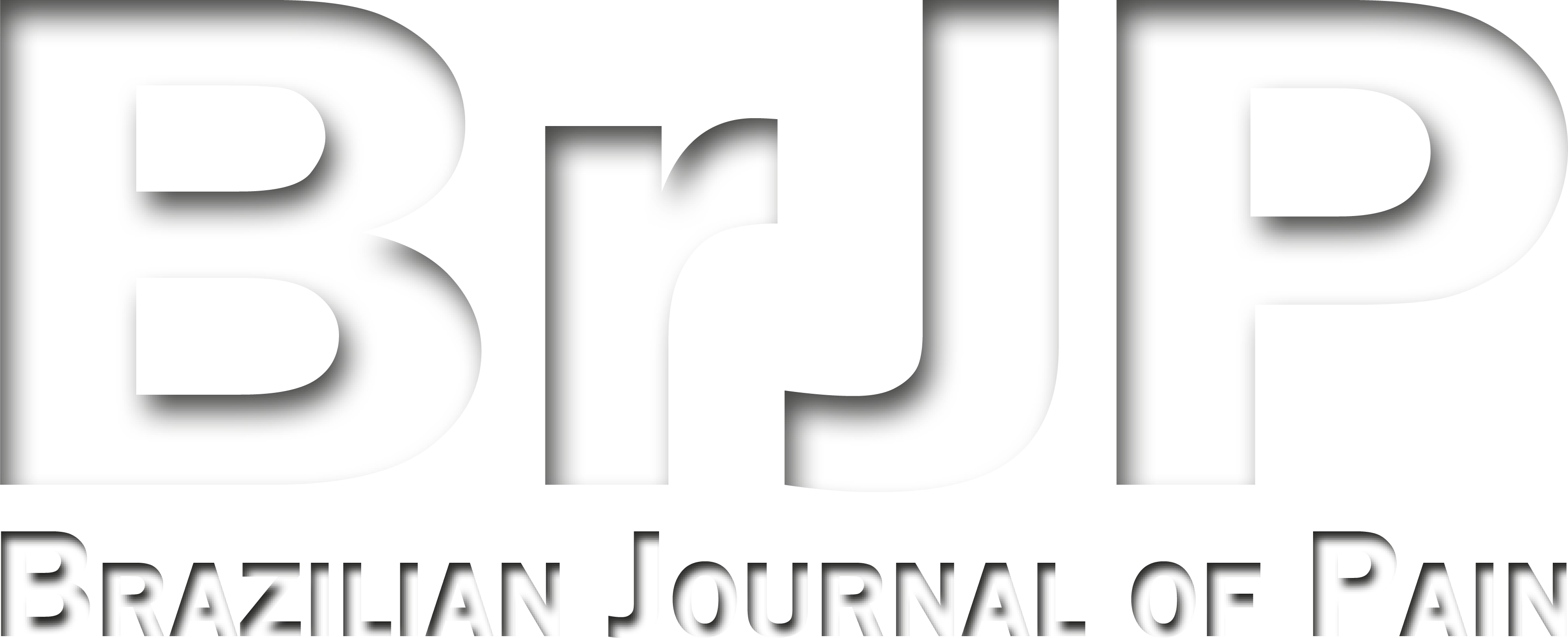Relationship between the perceived social support and catastrophization in individuals with chronic knee pain
Relação entre suporte social percebido e catastrofização em indivíduos com dor crônica do joelho
Bruna Almeida; Adriana Capela; Joana Pinto; Vânia Santos; Cândida G. Silva; Marlene Cristina Neves Rosa
Abstract
Keywords
Resumo
Palavras-chave
References
How Prevalent Its Chronic Pain?. Pain Clin Update. 2003;XI(2):1-4.
Azevedo LF, Costa-Pereira A, Mendonça L, Dias C, Castro-Lopes JM. Epidemiology of chronic pain: a population-based nationwide study on its prevalence, characteristics and associated disability in Portugal. J Pain. 2012;13(8):773-83.
Ilori T, Ladipo MM, Ogunbode AM, Obimakinde AM. Knee osteoarthritis and perceived social support amongst patients in a family medicine clinic. S Afr Fam Pract. 2016;1(1):1-5.
McDougall JJ. Arthritis and pain: Neurogenic origin of joint pain. Arthritis Res Ther. 2006;8(6):220.
Quicke JG, Foster NE, Thomas MJ, Holden MA. Is long-term physical activity safe for older adults with knee pain? A systematic review. Osteoarthritis Cartilage. 2015;23(9):1445-56.
Adams LM, Turk DC. Psychosocial factors and central sensitivity syndromes. Curr Rheumatol Rev. 2015;11(2):96-108.
Edwards RR, Cahalan C, Mensing G, Smith M, Haythornthwaite JA. Pain, catastrophizing, and depression in the rheumatic diseases. Nat Rev Rheumatol. 2011;7(4):216-24.
Gatchel RJ. The biopsychosocial model of chronic pain. The biopsychosocial model of chronic pain. 2013:5-17.
Azevedo LF, Pereira AC, Dias C, Agualusa L, Lemos L, Romão J. Questionários sobre dor crónica. tradução, adaptação cultural e estudo multicêntrico de validação de instrumentos para rastreio e avaliação do impacto da dor crónica. Dor. 2007;15:6-37.
Leung L. Pain catastrophizing: an updated review. Indian J Psychol Med. 2012;34(3):204-17.
López-Martínez AE, Esteve-Zarazaga R, Ramírez-Maestre C. Perceived social support and coping responses are independent variables explaining pain adjustment among chronic pain patients. J Pain. 2008;9(4):373-9.
Bogossian FE. Social support: proposing a conceptual model for application to midwifery practice. Women Birth. 2007;20(4):169-73.
Cramer D, Henderson S, Scott R. Mental health and adequacy of social support: a four-wave panel study. Br J Soc Psychol. 1997;35:285-95.
Che X, Cash R, Fitzgerald P, Fitzgibbon BM. The social regulation of pain: autonomic and neurophysiological changes associated with perceived threat. J Pain. 2018;19(5):496-505.
Sullivan MJ, Thorn B, Haythornthwaite JA, Keefe F, Martin M, Bradley LA. Theoretical perspectives on the relation between catastrophizing and pain. Clin J Pain. 2001;17(1):52-64.
Sullivan MJ, Adams H, Sullivan ME. Communicative dimensions of pain catastrophizing: social cueing effects on pain behaviour and coping. Pain. 2004;107(3):220-6.
Sullivan MJ. The Pain Catastrophizing Scale. 2009:3-22.
Broekmans T, Gijbels D, Eijnde BO, Alders G, Lamers I, Roelants M. The relationship between upper leg muscle strength and walking capacity in persons with multiple sclerosis. Mult Scler. 2013;19(1):112-9.
Adachi T, Nakae A, Maruo T, Shi K, Maeda L, Saitoh Y. The relationships between pain catastrophizing subcomponents and multiple pain-related outcomes in Japanese outpatients with chronic pain: a cross-sectional study. Pain Pract. 2018;17.
Gauthier LR, Rodin G, Zimmermann C, Warr D, Librach SL, Moore M. The communal coping model and cancer pain: the roles of catastrophizing and attachment style. J Pain. 2012;13(12):1258-68.
Krahé C, Springer A, Weinman JA, Fotopoulou A. The social modulation of pain: others as predictive signals of salience - a systematic review. Fornt Hum Neurosci. 2013;7:386.
Suso-Ribera C, García-Palacios A, Botella C, Ribera-Canudas MV. Pain catastrophizing and its relationship with health outcomes: does pain intensity matter?. Pain Res Manag. 2017;2017.
Submitted date:
08/06/2008
Accepted date:
12/30/2018


